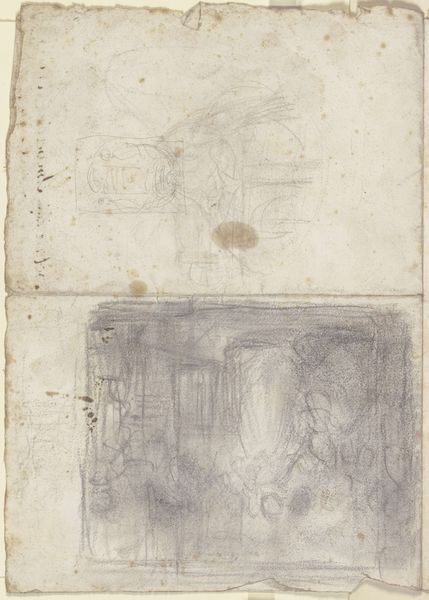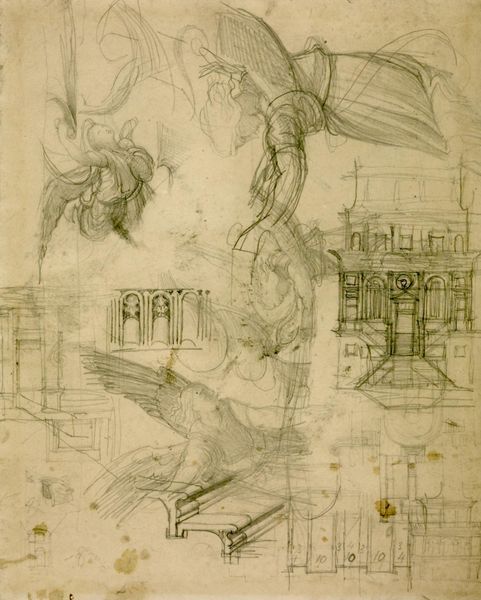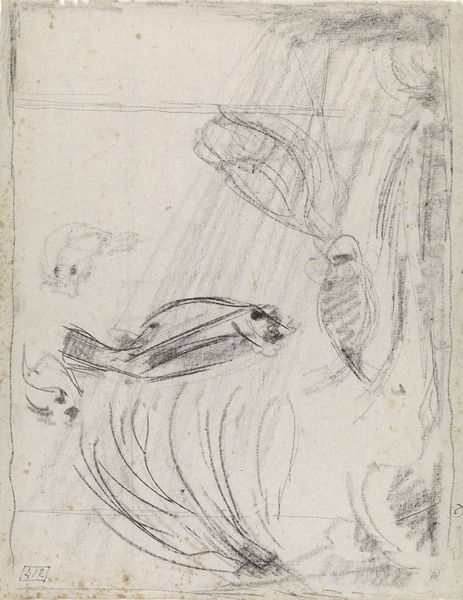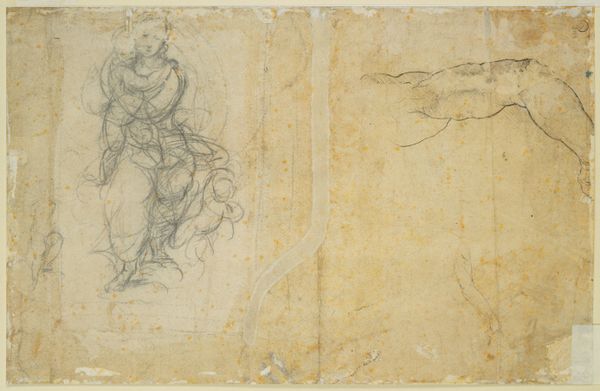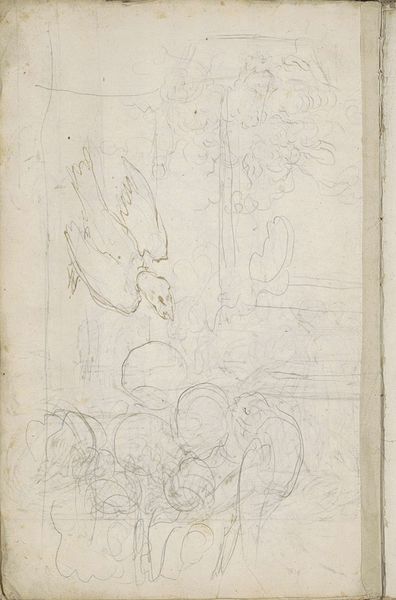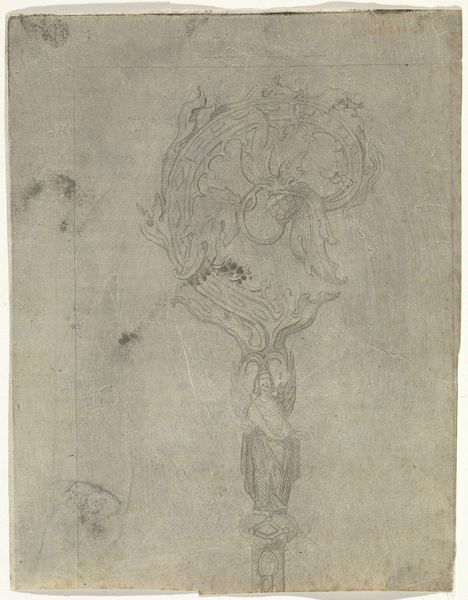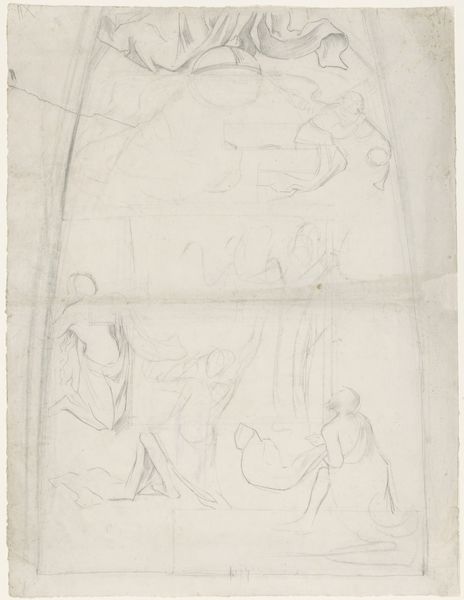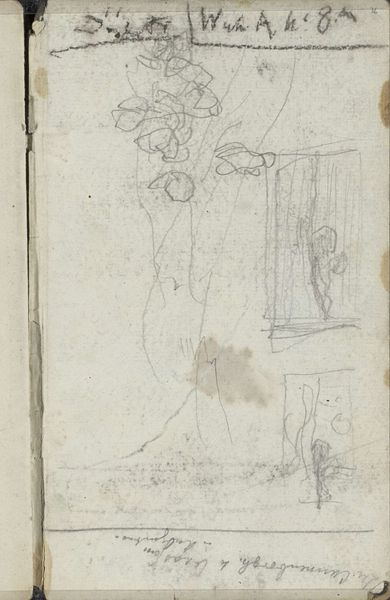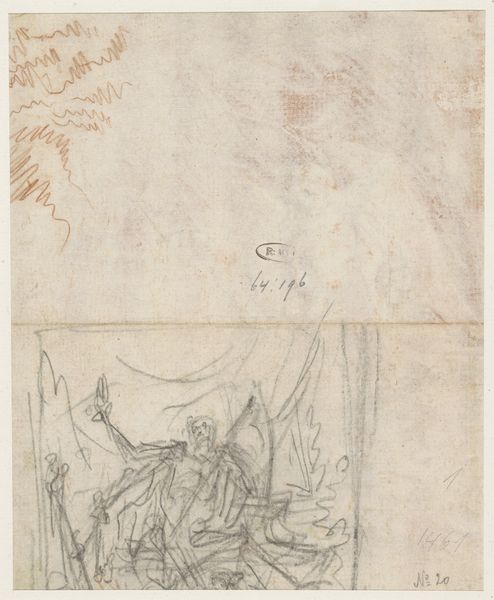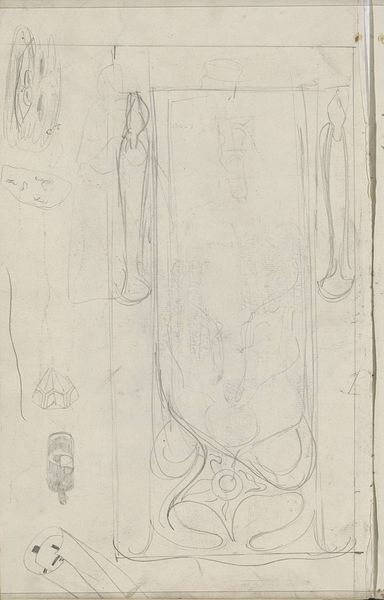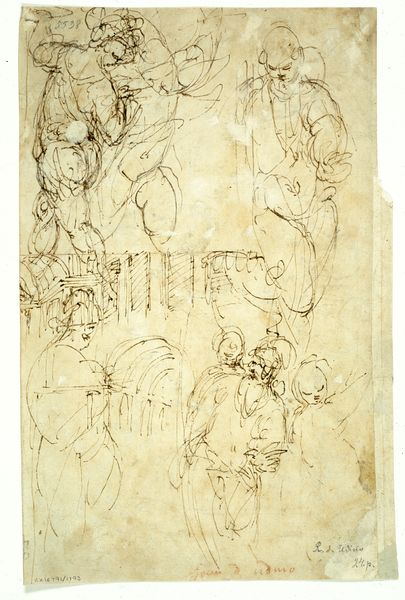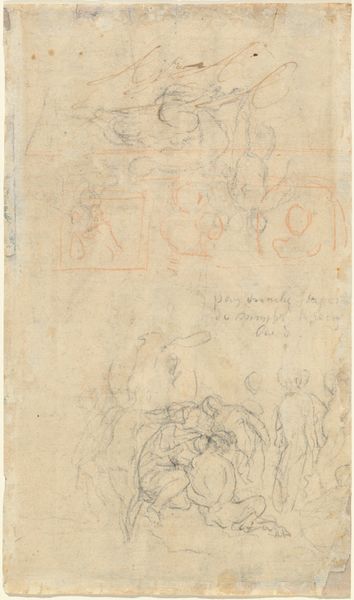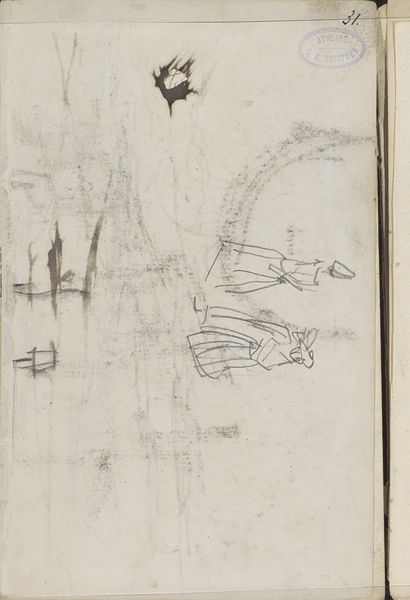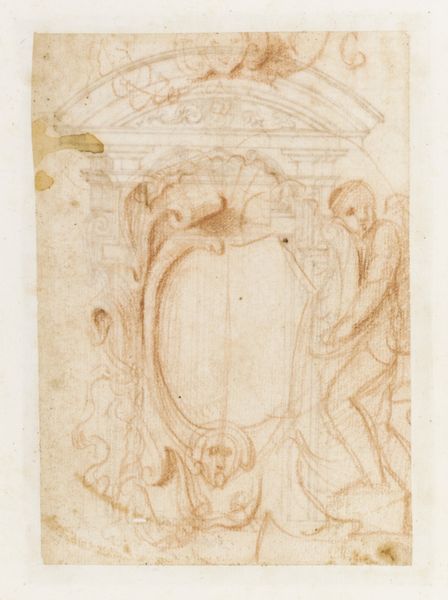
drawing, paper, pencil, graphite
#
portrait
#
drawing
#
16_19th-century
#
pencil sketch
#
figuration
#
paper
#
romanticism
#
pencil
#
graphite
#
genre-painting
Copyright: Public Domain
Curator: Let's take a look at this intriguing pencil drawing from the Städel Museum’s collection. It's titled "Ritter vor einer Dame kniend; Mädchen mit Kerze," or "Knight Kneeling Before a Lady; Girl with Candle." The artist, Philipp Winterwerb, created this work sometime in the 19th century. Editor: It's really rough, isn't it? Raw, immediate…you can almost feel the graphite scraping on the paper. The figures are barely there, just hints and shadows. Curator: Exactly. As a study, it captures that Romantic interest in dramatic, theatrical moments and themes like chivalry and candlelight that signal drama or even danger. Editor: The bottom panel is especially interesting; that almost obscured figure lying down. It makes you wonder about labor - who were the models, what did they earn, and what were their living conditions? The whole thing feels charged, yet unresolved, given its sketchy nature. Curator: I see the historical drama linking directly to class anxieties as a rising merchant class began to both idolize, and question, the aristocracy and those associated archetypes. Artists needed new stories, and these subjects reflect that turmoil. And the speed, the sketchiness we see suggests both the dynamism and fleeting nature of the time. Editor: Agreed. Look at the surface of the paper too - aged, almost distressed. Paper production itself was in a state of flux then, with industrialization beginning to impact quality and availability. It's more than just support, it's actually another crucial element here. Curator: Fascinating to think about, certainly. It adds another layer to its romanticized notions, understanding how societal structures and technologies of production at that time were actually shaping how, and what, the artist creates. Editor: It makes one consider just how complicit images themselves might be in these emerging shifts, the work and materiality itself both contributing to what is being represented and observed. Curator: Absolutely. Well, that definitely gave us something to ponder! Editor: Indeed, it provides a revealing lens for both art and social understanding.
Comments
No comments
Be the first to comment and join the conversation on the ultimate creative platform.
